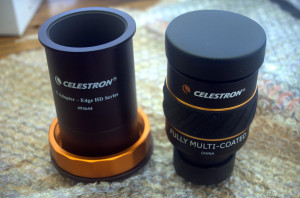Not an observing update, something slightly different. Let me tell the story.
At this year’s Webb Deep Sky Society‘s AGM, the world’s premier uranographer, Wil Tirion gave a great talk. Fascinating. Of course, the first star atlas of his I owned was a little tiny ‘Collins Gem’ variant, way back when I was, errr, nine. In 1981. And I still have it 🙂
Skipping forward a few months, and someone somewhere mentioned Splash Maps to me. Neat idea, I though, as I do love a good map, and these were something that bit different. Great for hiking, biking, and…hang on. Something struck me. If I got a star chart printed on one of those, that would rock. Being waterproof, it could stay outside with me, help me learn the positions of more Messier objects, doubles, clusters and the like. It could be shared with others, a cool field teaching accessory. It could even be used when I didn’t have a ‘scope, on holidays, just stuff it in my pocket. (I got a little disorientated in Bulgaria over the summer. So I could take it with me everywhere.)
So I had a plan. First up, I contacted the very-helpful David at Splash Maps, to see if he could do such a thing for me. Meantime, more as a cheeky question than a hopeful one, I emailed Wil Tirion himself to ask permission to use one of his charts on the map. (I was wistfully looking through his atlases, trying to pick one I’d like printed.)
David was agreeable, and…wait for it…so was Wil! I didn’t even expect a reply, but I got one, and more than I hoped for. I mentioned I’d like a full Northern Hemisphere, but not in the colours that I had. I fancied it black-on-white, with a nice blue showing the flow of the Milky Way. After some back and forward to get to that point, he mentioned he had such a thing, from an out-of-print Canadian planisphere. But he’d fix the colours, amend it and send me the vector variant, so it could be scaled without loss of quality, to help with the printing.
I was…surprised, elated and very, very grateful. What a gentleman. Dealing with him was a joy. (And, being a fan, this pleases me on all levels.)
Now I had the image I wanted, I sent it on to Splash Maps, their cartographers and printers gave it the once over…and I waited to receive it. And now I have it, and it is superb. A one-off (well, it has a new copyright notice on it, so it isn’t exactly the same as the Canadian one!) Wil Tirion star chart, that I can take anywhere with me, that is waterproof, wearable, usable and just completely awesome. The first such thing anywhere, I’d wager. Sure, there are waterproof maps, but this is entirely different. And it is mine.
Others might copy it, but remember, I got here first 🙂
With many thanks to David at Splash Maps for making the process easy, and to the almighty Wil Tirion for just being himself, the world’s premier Uranographer.


